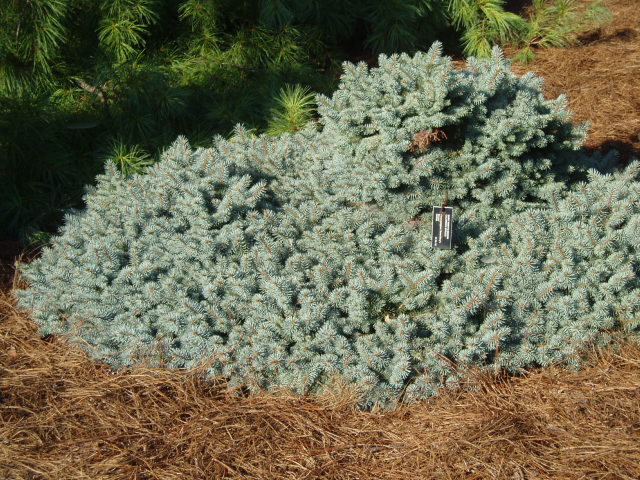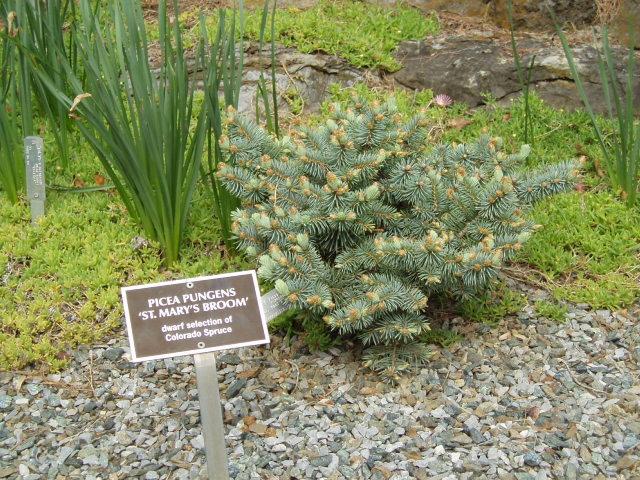Picea pungens 'St. Mary' is a dwarf, dense, mounding form of Colorado spruce with bright, light-blue sickle-shaped needles and conspicuous foliar buds in winter. Plants have a tendency to not push growth from terminal buds, which gives older plants an irregular outline. After 10 years of growth, a mature specimen will measure 12 inches (30 cm) tall and 2.5 feet (75 cm) wide, an annual growth rate of 1 to 2 inches (2.5 - 5 cm).
[ Obrizok, in A Garden of Conifers - Introduction and Selection Guide ] Very dwarf, dense cushion, low, mounding, very slow growing blue.
[ Iseli Nursery online catalog ] A dwarf, blue, bun-shaped selection, this slow-growing plant has relatively long, widely-angled needles. It reliably maintains a mounding or globose habit, without any tendency to develop a leader.
This cultivar originated as a witch's broom found in the late 1960s by Greg Williams at Kate Brook Nursery, Wolcott, Vermont. Layne Ziegenfuss introduced it to the nursery trade through Hillside Nursery, Lehighton, Pennsylvania. Greg found the broom on the grounds of St. Mary's Convent, Morristown, New Jersey.
Many interpretations of the cultivar name exist in the nursery trade. Most commonly seen being 'Saint Mary's Broom'. We're using the name published by Bob Fincham in his 1983 Coenosium Gardens catalog and repeated in his 2001 book Gone But Not Forgotten.


